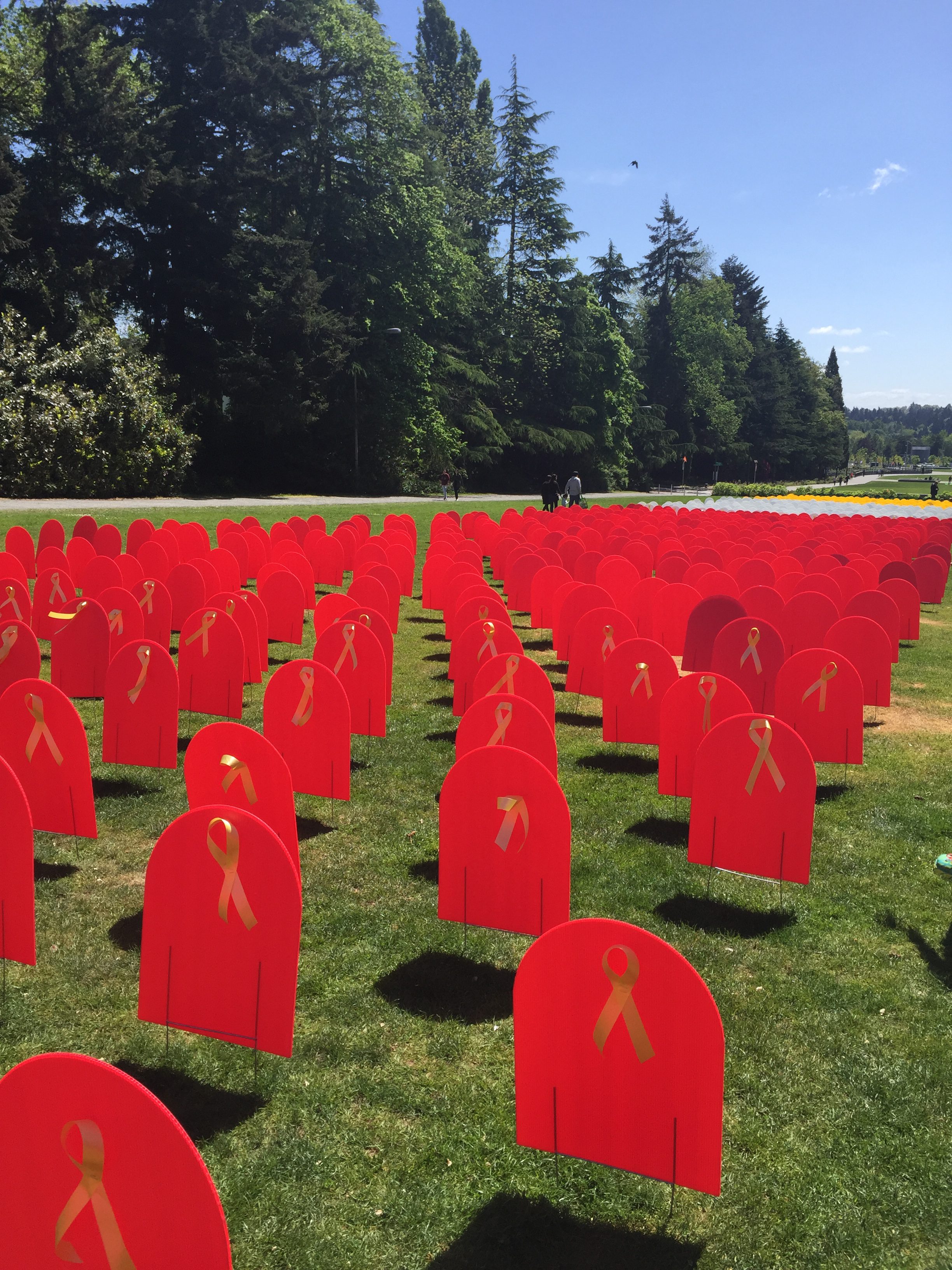On April 30th, over 100 Roosevelt students participated in the H3 Suicide Walk put on by the Huskies for Suicide Prevention and Awareness (HSPA). Roosevelt’s team was the largest for the second year running. In tradition, as the largest team, Roosevelt lead the walk. “This year I think we really worked towards getting teachers to come.” says senior and member of ASR Kai Haven. “ I think that that is important to show that it isn’t just the student body but also the faculty that care about this issue.” The walk stretched across just over two miles of University of Washington campus, stopping halfway through at a temporary memorial erected on one of the university’s sloping lawns by the UW based non-profit forefront. The memorial has traveled throughout Washington, stopping at places like Gonzaga University in Spokane and the state legislative building. It features 1,111 mini tombstones, each representing a death by suicide in Washington state in 2014. Each color corresponds to a cause of death; the majority of the stones are red, signifying death by firearms, then white (asphyxiation), yellow (poisoning), and lastly, green, signifying jumping. Many of the tombstones, also had yellow ribbons, showing that they were veterans. “I think this is a totally unique representation of death.” reflected Nurse Samara Hoag as she gazed at the many tombstones. “I am totally stunned.”
Before the walk began, members of HSPA shared their stories of suicide and depression, as well as explained how to facilitate change in the community. One of these members was UW senior Emily Murphy, a former Roosevelt student. In her senior year at Roosevelt, she lost someone to suicide, motivating her to become active in HSPA in college. “I’ve been coming to this walk since my freshman year at UW.” she shares. “There were only about 75 people at the walk, whereas now we have over 500, so it just keeps growing and growing, and I think it is going to keep growing as more people want to have a dialogue about mental health.” Murphy recalls the lack of education on the subject that she received at Roosevelt. “ I don’t ever remember talking about mental health, except in health classes. We would cover mental health for a week and people would do presentations but it wasn’t exactly politically correct. There are terms and ways to go about teaching mental health and the way we were taught, it wasn’t necessarily right, and people treated it as a joke.”
Language arts teacher Reid Von Pohle also attended the walk. “I definitely think we need more training for recognition.” he says, highlighting teacher’s duties in reducing suicide and depression in Roosevelt. “I know that as a teacher it is really difficult to be paying attention enough to recognize symptoms in students, and knowing our students well enough to see when they are starting to struggle.” Haven believes that Roosevelt has a ways to go until it becomes a better and more supportive community for those with mental illness, but that the walk was a start. “I think that we can show that there is a support team that is worth reaching out to.”
Featured Photo: The temporary memorial at the University of Washington in recognition of suicide in Washington state. Photo by Grace Jones
